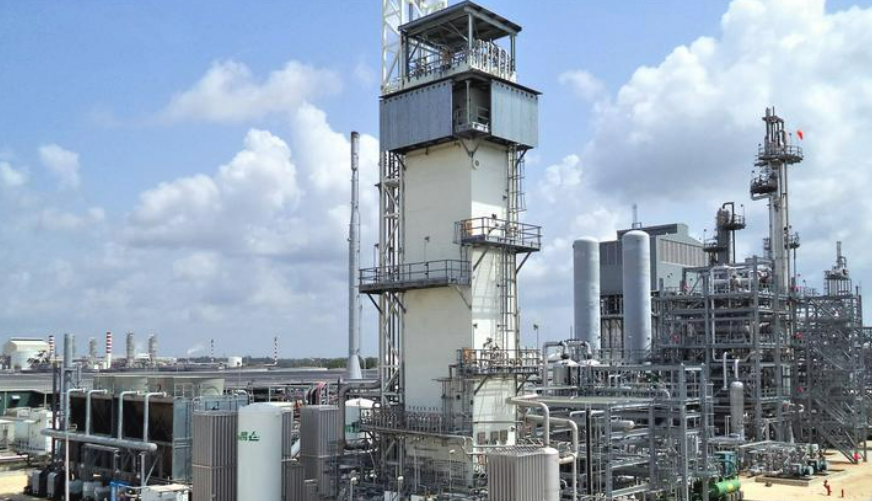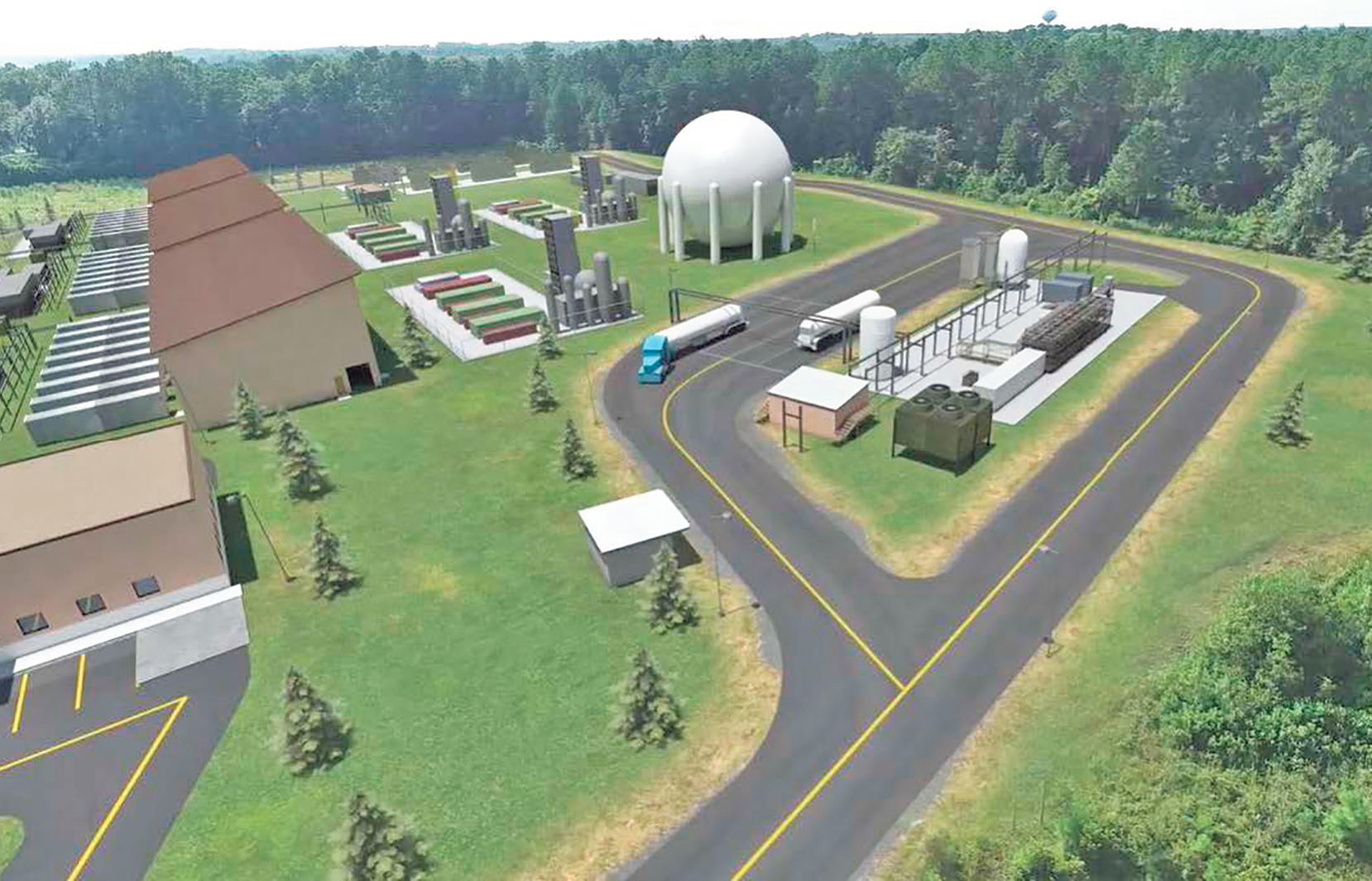
The United States is entering what may be its most ambitious decade yet for clean hydrogen infrastructure. By 2030, fourteen major green hydrogen facilities will either be operational or nearing completion, marking a fundamental shift in how America produces, distributes, and uses energy. These projects represent billions in private investment and signal that hydrogen is moving from pilot projects to industrial reality.
Green hydrogen, produced using renewable electricity to split water molecules, offers a zero-emission alternative for industries that can't easily switch to batteries or direct electrification. From refining operations to heavy transport and long-duration energy storage, these facilities are positioning the U.S. as a global leader in clean hydrogen production. The stakes are high, and the buildout is already underway.
>> RELATED: A Transformative Year for Hydrogen: Key Companies Driving Innovation in 2024

Why Green Hydrogen Matters Now
The Department of Energy's Hydrogen Earthshot initiative set an ambitious target of reducing clean hydrogen costs to $1 per kilogram within a decade. That goal is driving both technological innovation and massive capital deployment across multiple states. While federal hydrogen hub funding has faced recent uncertainty, private sector commitment remains strong.

Key Hydrogen Facts
The role hydrogen will play in decarbonizing hard-to-abate sectors cannot be overstated. Steel production, chemical manufacturing, heavy-duty trucking, and sustainable aviation fuel synthesis all require hydrogen as a feedstock or fuel source. Hydrogen can also power direct air capture facilities and other carbon removal technologies. These industries account for roughly 15% of U.S. emissions, making hydrogen essential for meeting net-zero targets by midcentury.

"The projects announced today will supercharge our progress and ensure our leadership in clean hydrogen will be felt across the nation for generations to come."
Jennifer Granholm, U.S. Secretary of Energy
Seven Projects Coming Online in 2025
The first wave of large-scale green hydrogen production facilities is set to begin operations this year. These pioneering projects will test commercial viability, supply chain logistics, and regulatory frameworks that future facilities will build upon. Here's what's coming online now.
1. St. Gabriel Green Hydrogen Plant (Louisiana)
Plug Power and Olin Corporation formed Hidrogenii, a 50/50 joint venture operating a 15-ton-per-day liquefaction facility. The plant captures by-product hydrogen from Olin's chlorine production, liquefies it, and distributes it across North America. With over 412,000 safe working hours logged during construction, the facility set strong safety standards while building critical supply chain infrastructure.
2. Sauk Valley Green Hydrogen Plant (Illinois)
Invenergy partnered with Ohmium to develop this facility using proton exchange membrane (PEM) electrolyzers powered by renewable electricity. The project targets industrial customers requiring clean hydrogen for manufacturing processes. Illinois' renewable energy portfolio makes it an ideal location for cost-competitive green hydrogen production.

3. Douglas County Green Hydrogen Project (Washington)
The Douglas County Public Utility District is leveraging abundant hydroelectric power to produce green hydrogen. This facility demonstrates how existing renewable infrastructure can be repurposed to support hydrogen production. The project serves as a model for other public utilities exploring hydrogen opportunities with minimal carbon storage requirements.
4. Intermountain Power Project (Utah)
Mitsubishi Power is leading this groundbreaking project that will blend hydrogen with natural gas for power generation. The facility represents a critical transition strategy, allowing gas turbines to gradually increase hydrogen content as production scales. By 2045, the plant aims to run on 100% hydrogen, demonstrating a pathway for converting existing infrastructure.
5. Advanced Clean Energy Storage (ACES Delta) (Utah)
Chevron and Mitsubishi are developing ACES, combining massive salt cavern storage with electrolyzer-based production. The facility will produce hydrogen using renewable energy and store it underground for use during peak demand periods. This project showcases how hydrogen can provide long-duration energy storage that batteries cannot match.
6. Niagara Falls Green Hydrogen Project (New York)
Linde is building a production facility that takes advantage of low-cost hydroelectric power from Niagara Falls. The location offers some of the cheapest renewable electricity in the nation, improving the economics of green hydrogen production. The facility will serve customers across the Northeast corridor.
7. DeBary Green Hydrogen Demonstration Plant (Florida)
Duke Energy is testing hydrogen blending with natural gas for grid-scale power generation. This demonstration facility will provide valuable data on hydrogen's role in grid stability and reliability. Florida's solar capacity makes it an ideal testing ground for renewable hydrogen production paired with intermittent generation.

>> In Other News: The Carbon to Value Initiative Announces Year 5 Startup Cohort for Its Carbontech Accelerator
Seven Major Projects Coming Online in 2026 and Beyond
The next wave of projects is larger, more ambitious, and better funded. These facilities will push production capacity significantly higher while testing new business models and applications. Several target export markets, positioning the U.S. as a global hydrogen supplier.
1. Casa Grande Hydrogen Plant (Arizona)
Air Products is developing a $360 million green hydrogen facility using Arizona's abundant solar resources. The project will produce hydrogen for both mobility applications and industrial customers. Arizona's renewable energy potential makes it a strategic location for large-scale hydrogen production.
2. Southern California Green Hydrogen Project (California)
Avina Clean Hydrogen is targeting the heavy-duty transportation market near the Port of Long Beach. The facility will produce 4 metric tons of compressed green hydrogen daily, serving fuel cell trucks and buses. California's zero-emission vehicle mandates create strong demand for this production capacity.
3. Richmond Waste-to-Hydrogen Project (California)
Raven SR and Chevron are pioneering a waste-to-hydrogen conversion facility that processes municipal solid waste and biogas. This innovative approach addresses both waste management and clean fuel production simultaneously. The technology could be replicated in cities across the country.
4. Genesee County Hydrogen Facility (New York)
Plug Power received a conditional $1.6 billion loan guarantee from the DOE to build six hydrogen production facilities nationwide, including this New York location. The Genesee County plant will manufacture electrolyzer stacks at Plug's Henrietta facility, creating jobs while building supply chain resilience.

5. Graham County Hydrogen Project (Texas)
Another Plug Power facility under the DOE loan guarantee program, this Texas plant will leverage the state's renewable energy boom. Texas leads the nation in wind energy production, providing abundant low-cost electricity for electrolysis. The facility will serve growing demand from both industrial and transportation sectors.
6. Donaldsonville Green Hydrogen and Ammonia Project (Louisiana)
CF Industries is building a $4 billion low-carbon ammonia facility that combines green hydrogen production with carbon capture technology. The project secured a 25-year carbon sequestration agreement with Occidental, demonstrating how hydrogen and carbon management technologies can work together. Ammonia production consumes vast amounts of hydrogen, making this one of the sector's most significant applications.
7. AES Corporation Mega Hydrogen Facility (Texas)
AES and Air Products are developing one of the largest green hydrogen facilities planned in North America. The project will integrate massive renewable energy capacity with electrolyzer production and storage infrastructure. Texas' energy market structure and renewable resources make it an ideal location for giga-scale hydrogen production.
"Our mission is to pioneer the hydrogen economy for present and future generations."
Andy Marsh, CEO of Plug Power
Challenges That Could Slow Progress
Despite the momentum, several obstacles threaten to delay or derail hydrogen projects. Electrolyzer costs remain high compared to conventional hydrogen production methods. Supply chains for critical components are still developing, with long lead times for major equipment deliveries. Grid connection delays plague projects trying to secure renewable electricity offtake agreements.
Permitting processes can stretch for years, particularly for projects involving novel technologies or environmental reviews. Infrastructure gaps, especially hydrogen pipelines and storage facilities, limit where projects can be economically developed. Recent federal policy shifts have also created uncertainty, with some hydrogen hub funding facing cuts or delays.
Perhaps most critically, demand creation remains a challenge. Industries need confidence in reliable hydrogen supply before committing to fuel-switching investments. Meanwhile, hydrogen producers need committed offtake agreements before securing project financing. Breaking this chicken-and-egg dynamic will require coordinated action from industry, government, and financial institutions.
Workforce Development and Job Creation
The hydrogen buildout is creating demand for workers across multiple skill sets. Electrolyzer technicians, process engineers, project managers, and hydrogen safety specialists are all in short supply. Community colleges and technical schools are developing training programs, but the pace of education lags behind industry needs.
Union involvement in several major projects ensures prevailing wages and quality training programs. The DOE estimates that meeting hydrogen production targets could create 100,000 direct and indirect jobs by 2030. Many of these positions will be in regions transitioning away from fossil fuel industries, providing economic opportunities in communities that need them most.
What Comes Next
The period from 2025 to 2030 will be decisive for American hydrogen infrastructure. Early projects will prove whether the technology, economics, and logistics can support industrial-scale deployment. If these fourteen facilities operate successfully, expect a second wave of investment that could dwarf current commitments. The U.S. has the renewable resources, technical expertise, and industrial base to become a hydrogen superpower.
Global competition is intensifying, with China, Europe, and the Middle East all pursuing aggressive hydrogen strategies. America's success depends on maintaining policy support, accelerating permitting processes, and building out critical infrastructure. The projects launching now are laying the groundwork that will determine whether the U.S. leads or follows in the global hydrogen economy.
For industries seeking to decarbonize, these facilities represent more than just new supply sources. They signal that clean hydrogen is transitioning from concept to commodity, with the price declines and reliability improvements that come with scale. The next five years will reveal whether hydrogen fulfills its promise as a cornerstone of America's clean energy future.
Subscribe to the newsletter
Daily decarbonization data and news delivered to your inbox
Follow the money flow of climate, technology, and energy investments to uncover new opportunities and jobs.
Latest issues
-
Inside XCF Global's $300M Bet to Double U.S. SAF Output
Inside This Issue ✈️ Inside XCF Global's $300M Bet to Double U.S. SAF Output ⚙️ Capsol Technologies Signs MoU with US Utility to Deploy CapsolGT® for Low-carbon Gas Power Generation 🏭 Babcock &...
-
64 Carbon Projects Were Stuck. Texas Just Unlocked Them
Inside This Issue 🛢️ 64 Carbon Projects Were Stuck. Texas Just Unlocked Them ⚙️ In Ohio, Hydrogen Industry Presses on Despite Federal Uncertainty 🧲 Agami Zero Breaks Through With Magnetic Hydrogen...
-
This U.S. Plant Might Change Aviation Forever
In This Issue 🛫 A Georgia Plant Just Cracked Aviation's Fuel Puzzle 📉 CO2RE And ERM Release 2025 Update On Greenhouse Gas Removal Costs 🔗 Abatable Partners With BlueLayer To Streamline Corporate C...
Company Announcements
-
Anaergia Technologies, LLC to Provide Integrated Waste-to-Energy Technology for PepsiCo Mexico Foods
Contract Extending Relationship with PepsiCo is Anaergia’s First Project in Mexico CARLSBAD, California & BURLINGTON, Ontario—Anaergia Inc. (TSX: ANRG) (OTCQX: ANRGF), through its subsidiary, ...
-
Green Plains Achieves a Milestone as CO2 from Nebraska is Sequestered in Wyoming
All Three Nebraska Facilities Now Capturing CO2; First 45Z Payment Demonstrates Early Value OMAHA, Neb.—Green Plains Inc. (NASDAQ: GPRE) today announced that biogenic carbon dioxide from all three...
-
North America on Track for ICAO’s 2030 Cleaner-Energy Target as Other Regions Lag
IBA, the aviation market intelligence and advisory company, reports that North America is currently the only global region on track to meet the International Civil Aviation Organisation (ICAO) clea...
-
CHARBONE Taps Air Liquide Veteran Ahead of First Revenue From Flagship Project
BROSSARD, QUEBEC - December 9, 2025 (NEWMEDIAWIRE) - CHARBONE CORPORATION (TSXV: CH; OTCQB: CHHYF; FSE: K47) ("CHARBONE" or the "Company"), a North American producer and distributor specializing in...